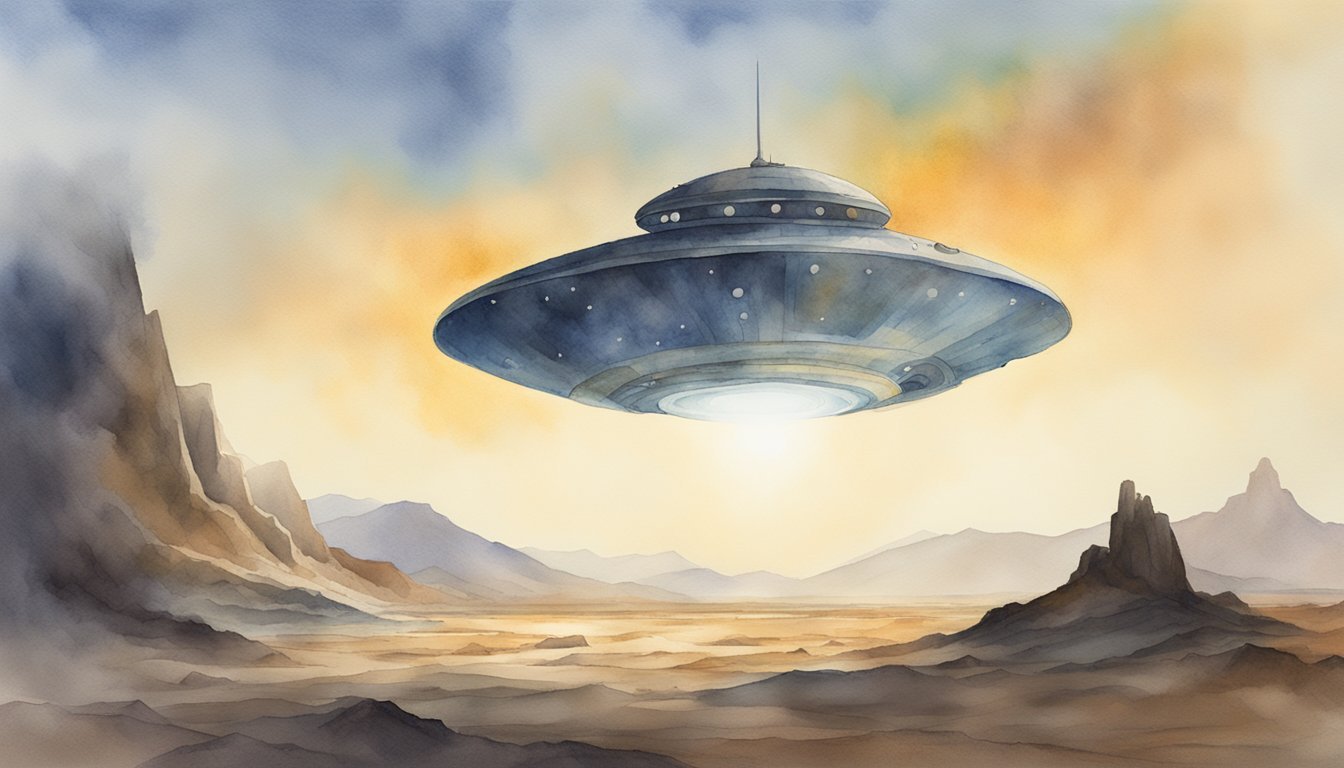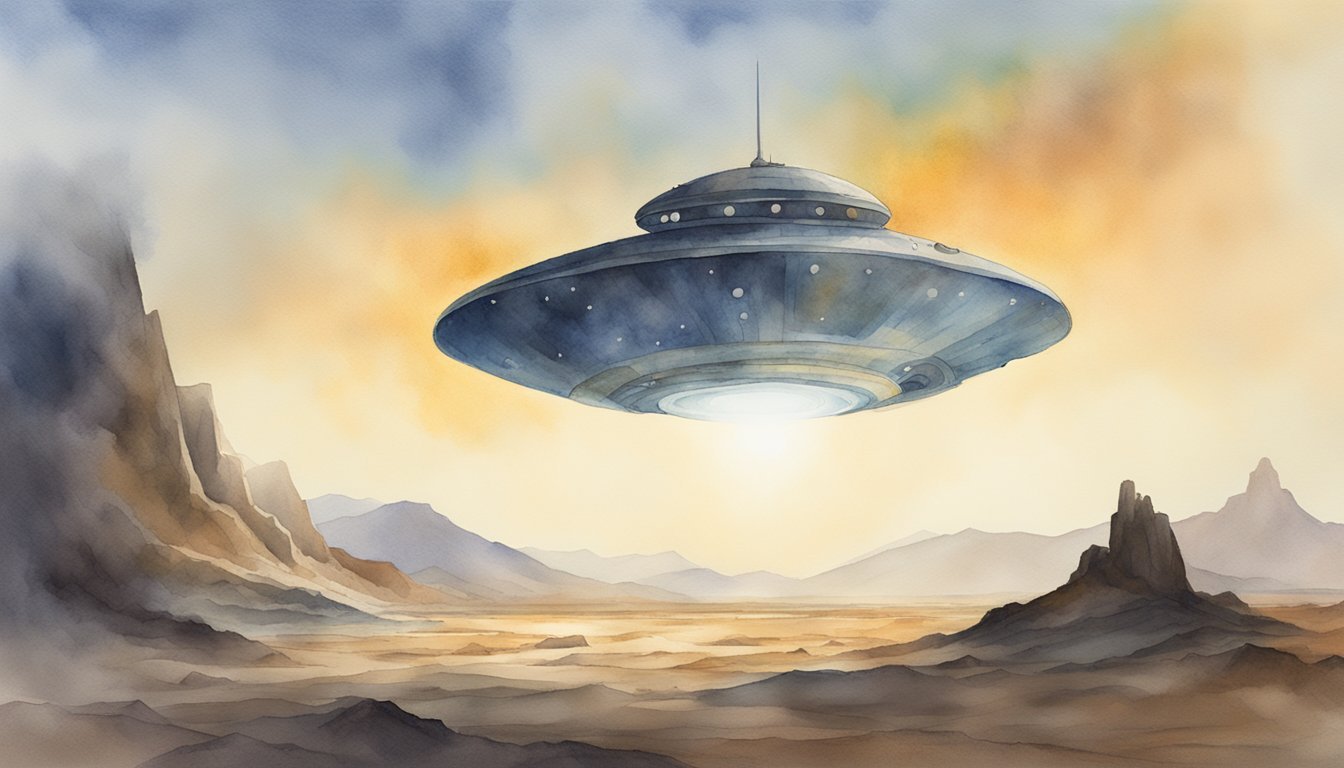Discovery of Extraterrestrial Life
Recent years have seen a surge in the search for extraterrestrial life, driven by fresh discoveries and novel scientific methods. From ocean worlds to distant exoplanets, scientists are unraveling the mysteries of the cosmos, inching closer to answering the age-old question: Are we alone?
Confirmed Instances and Implications
To date, there have been no confirmed instances of extraterrestrial life, but that hasn’t stopped the scientific community from exploring the vastness of space for signs of nonhuman biologics. Reports of alien signals from Proxima Centauri have piqued the interest of many, though their scientific validity remains under scrutiny. NASA’s missions have shed light on ocean worlds such as Enceladus, a moon of Saturn, and Europa, a moon of Jupiter, which are both prime candidates in the ongoing search for life due to their subsurface oceans.
Ocean Worlds
- Saturn’s Moon, Enceladus
- Jupiter’s Moon, Europa
Potential Signals
- Proxima Centauri: Unusual radio transmission
- ‘Oumuamua: Interstellar object with peculiar properties
Scientific Investigations and DNA Analysis
The heart of extraterrestrial exploration lies in the rigorous scientific investigations spearheaded by agencies like NASA and teams of international scientists. DNA analysis plays a crucial role in the hypothetical scenario of discovering extraterrestrial specimens. Should scientists encounter living organisms, DNA analysis could help determine the biological makeup and evolutionary origins of these entities. For example, any life discovered on exoplanets or within our solar system could offer unprecedented insights into extremophiles, organisms that thrive in extreme conditions, and widen our understanding of life itself.
Scientific Tools and Targets
- DNA Analysis: Essential for decoding alien biology
- Exoplanets: Thought to potentially harbor life
- Black Holes: Studied for their extreme environments
Scientists continue to seek out extremophiles on Earth to better understand the potential diversity of life that could exist beyond our planet. The search for life extends to exoplanets that lie in the habitable zones of their respective stars and are thus candidates for harboring life. Studies around black holes and other extreme cosmic environments also help frame hypotheses about the resilience and adaptability of life.
Unidentified Aerial Phenomena

The skies over the United States and beyond have long been the stage for the enigmatic presence of Unidentified Aerial Phenomena (UAP). These occurrences, more colloquially known as UFOs or unidentified flying objects, have captured the imaginations of Americans while also posing intriguing questions for national security.
The U.S. Navy has played a pivotal role in documenting these anomalous phenomena. Breathtaking maneuvers and high-speed antics of UAPs captured on video by Navy fighter pilots have challenged conventional understanding of aerospace capabilities and physics. Despite the stigma often associated with reporting such sightings, the openness of government transparency with respect to UFOs underwent a significant shift.
In 2020, the Pentagon released three Navy videos showing UAPs, acknowledging the veracity of the incidents. Since then, the push for more information has seen the Department of Defense laying the foundation for the All-domain Anomaly Resolution Office (AARO). The mission: to track, analyze, and transparently communicate findings about UAPs.
Recent hearings on the matter showcase a pivotal moment for the topic, where entities like Americans for Safe Aerospace rally for more active engagement in understanding UFOs. For many, it’s about taking a scientific approach to the formerly untouchable topic, sifting through verifiable information to separate fact from science fiction.
UFO sightings continue to be a matter of curiosity and debate. With these developments, the longing for clarity and resolution continues to fuel the passionate discourse on unidentified aerial phenomena – an enduring enigma that dances at the edges of America’s vibrant sky.
Here’s how the official recognition of UAPs by various U.S. bodies has evolved:
- 2017: Leaked footage of UAPs leads to public intrigue.
- 2020: Pentagon officially releases Navy footage, acknowledging UAPs.
- 2021: Preliminary Assessment: Unidentified Aerial Phenomena report is presented to Congress.
- 2022: Hearings in Congress mark a significant step toward removing stigma and fostering open discussion on UAPs.
- 2024: AARO actively engages in the investigation, adding a layer of government authorization and scientific rigor to the analysis of unexplained aerial sightings.
Technological Aspects and Defense

When discussing extraterrestrial technology and its potential impact on Earth, understanding both the technological aspects and defense implications is crucial. Commercial pilots and others who have witnessed unidentified flying objects often describe them exhibiting advanced technological capabilities, such as rapid acceleration and agility that defy our current understanding of physics.
The US Department of Defense takes these sightings seriously, employing intelligence officers to assess any possible threats. Such efforts are part of a broader strategy ensuring safety and transparency regarding unexplained aerial phenomena. Investigations often involve examining video evidence collected by military personnel, which analysts scrutinize with sophisticated AI tools to try to understand the nature of these objects.
Dr. David Grusch, a hypothetical intelligence officer at the National Autonomous University, suggests that if any alien technology were to be discovered, it would need to be handled with utmost security to prevent potential misuse. This also includes protection against would-be whistleblowers, who might threaten project confidentiality.
In the context of defense, researchers also ponder on AI’s role in counteracting any unforeseen threats. Think of it as a chess game where humans and AI collaborate to anticipate extraterrestrial moves, striving to protect Earth.
A lingering question among Americans and people worldwide is whether any recovered extraterrestrial technology could offer new insights. Imagine unlocking advanced propulsion systems or energy sources; the implications for society and science would be astounding.
In the end, balancing curiosity with caution remains the keystone. The intersection of extraterrestrial technology and defense is a delicate dance of preparation and responsibility, with global teams working together to navigate these uncharted waters.
Historical and Cultural Impact

Throughout history, interest in extraterrestrial materials and potential alien encounters has fascinated humanity. Various ancient civilizations have depicted extraterrestrial visitations in their art and literature, suggesting a deep-rooted curiosity about the cosmos and its possible inhabitants. In fact, fragments found in Roman and Viking graves have sparked discussions about early instances of alien species interacting with humans.
The recent findings of mummies in Cusco, Peru, characterized by elongated heads and three fingers, which are estimated to be over 1,000 years old, have added to the speculation of alien contact. This discovery has generated questions about how these anomalous features could have evolved. Carbon dating has confirmed their age, while critics suggest these could be a result of ancient practices or natural mutations rather than evidence of extraterrestrial life.
Moreover, indigenous cultures around the world have oral traditions and physical evidence such as cave paintings and carvings that have led some to advocate for the theory of ancient aliens. Individuals like Nick Pope, who previously investigated UFOs for the British Ministry of Defence, have emphasized the possibility of unreported or classified information that could shed light on the human-alien relationship.
The tales of retaliation or cooperation between humans and supposed alien beings have been a part of folklore and conspiracy theories for decades. Whether they are ancient eggs with otherworldly origins or simply cultural artifacts, these discoveries continuously impact our understanding of human history and the potential for interstellar connections.
Are There Any Signs of Alien Life in Our Cosmic Backyard That Support Urban Myths?
As scientists explore our cosmic backyard, they encounter intriguing phenomena that fuel speculation. From mysterious radio signals to unusual atmospheric patterns on other planets, these discoveries spark curiosity. The quest for answers often leads to unraveling myths about extraterrestrial existence, merging science with the folklore that surrounds our fascination with the unknown.
Public Perception and Government Involvement

Public interest in unidentified aerial phenomena (UAPs) has historically been high, with individuals keen on unraveling the mysteries of potential extraterrestrial life. In America, this curiosity has led to a mix of skepticism and belief across the nation’s populace. While some maintain a healthy skepticism, others believe in the existence of aliens and eagerly follow developments in the field.
In recent years, the government’s response to UAPs has evolved significantly. The Pentagon, responding to mounting public pressure, confirmed the existence of an Advanced Aerospace Threat Identification Program which analyzed aerospace threats, including those posed by UAPs. This acknowledgment has been a tipping point for the issue, now considered a matter of national security.
NASA, typically focused on space exploration and science, has also delved into the issue, indicating an institutional acknowledgment of UAPs’ significance. Additionally, The Office of the Director of National Intelligence (ODNI) has been involved, releasing a comprehensive report to Congress on UAPs, signaling greater transparency from the government and suggesting a structured approach toward what once was a taboo topic.
Legislative bodies such as Mexico’s Congress and the United States House of Representatives have held hearings, prompting discussions around UAP sightings and their implications. Such hearings exemplify a broader trend of legislative engagement with unidentified phenomena.
David Grusch, a theoretical physicist, voices a sentiment shared by many in the scientific community: a desire for empirical investigation into UAPs without dismissing the extraordinary nature of many sightings reported by credible witnesses, which continue to intrigue both the public and the government.
While many questions remain unanswered, it’s clear that the synergy between public perception and government involvement is critical in navigating the mysterious frontier of UAPs and potential alien encounters.

